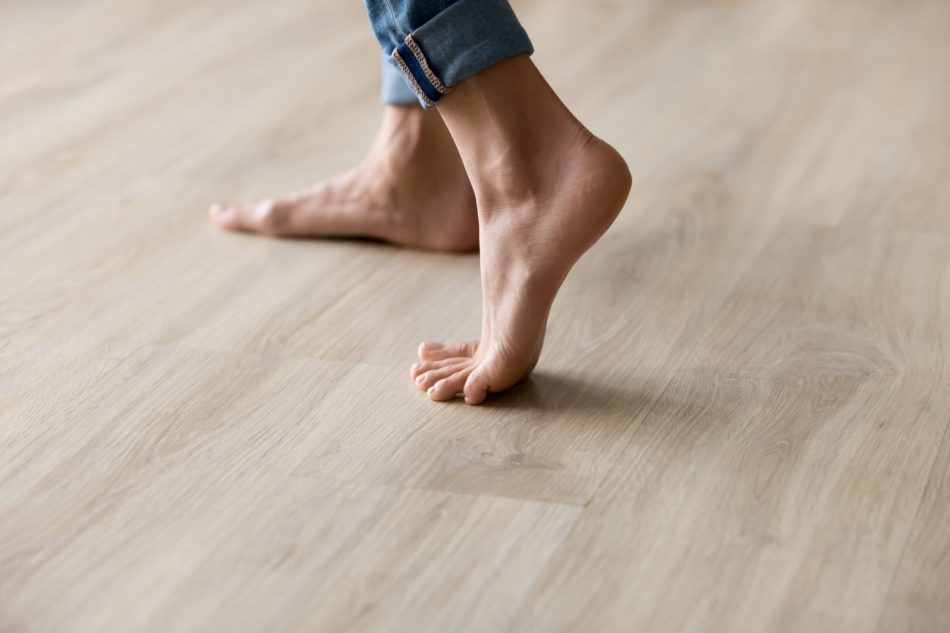Swiss researchers from the Wood Materials Science Laboratory at the ETH Zürich and the Swiss Federal Laboratories for Materials Science and Technology in Dübendorf are working on an exciting new way to generate energy that requires us to simply move around our own homes and buildings.
The research team demonstrates their work in a video that shows someone stepping repeatedly on a piece of square wood flooring that is wired to a lightbulb. With every step the person takes, the light bulb flickers on. Essentially, the sustainable solution to powering our lives may be right under our feet.
How does it work, you ask? The researchers are employing the triboelectric effect, which is a way to generate electricity by transferring electrons from one material to another, usually because of the way those materials rub together. Triboelectric nanogenerators aren’t a new discovery, however, the scientists had a particularly difficult hurdle to overcome while developing triboelectric wooden floor panels.
Most triboelectric nanogenerators use synthetic “triboactive” materials such as teflon or silicone to conduct electricity. Wood, on the other hand, isn’t a triboactive material. In fact, it’s pretty much neutral, which means that it neither attracts nor loses electrons. In order for a triboelectric nanogenerator to work, it needs material that does both of these things in order to generate a charge.
The research team met this challenge by changing the wood’s triboelectric properties, coating one piece with silicone and the other with nanocrystals called ZIF-8, which includes metal ions and organic molecules. The wood acts as a host to the triboactive materials, which means that fewer synthetic materials are needed to produce these nanogenerators.
The team tested different kinds of wood and different cuts of wood because it turns out that the direction the wood is cut affects electricity generation. Radially cut spruce came out on top. “Not only did we actually gain insight on the role that wood can have in a triboelectric generator,” says Guido Panzarasa, senior author of the study and group leader in the Wood Materials Science Laboratory, “we also made a nanogenerator which is really made mostly of wood.”
Panzarasa and his team are hoping to develop more eco-friendly coatings for the wood and figure out how to make these wooden floorboard nanogenerators easier to scale to an industrial level.
“The idea is that by being able to transform a material which is at the same time natural, renewable, sustainable, and CO2-storing… to equip such a material with the ability to generate electricity just being walked upon, then this, of course, could be—without sacrificing its positive properties and especially its sustainability—a groundbreaking technology in terms of increasing the energy efficiency of buildings,” Panzarasa says.
The research is still in its early days, so other factors that they need to analyze (such as how many people are walking on it and how often) before being able to estimate how much energy, say, an entire office floor of the wooden triboelectric nanogenerator panels would generate.
Source Study: Matter—Functionalized wood with tunable tribopolarity for efficient triboelectric nanogenerators











